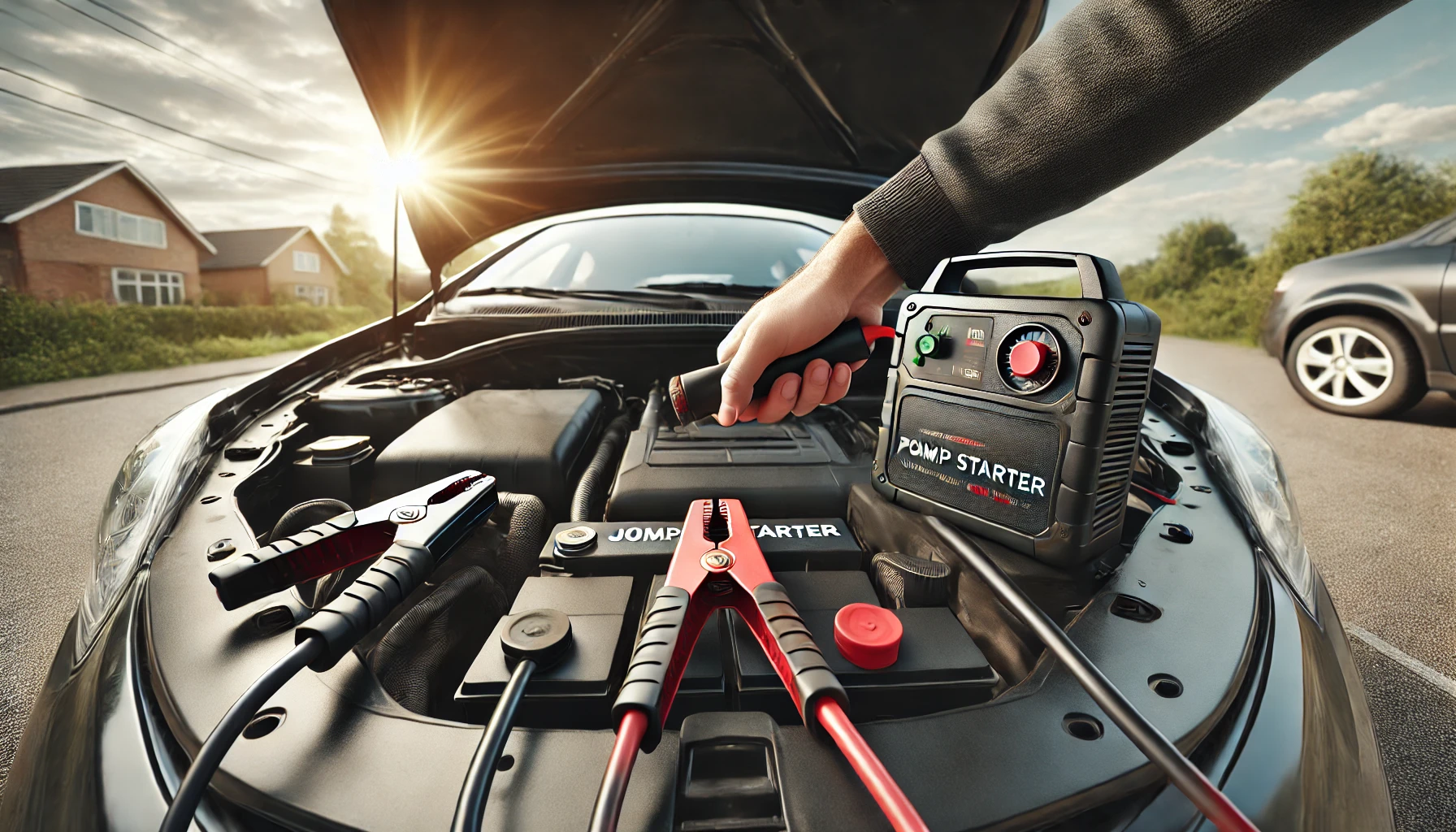A dead car battery can happen at the worst times, but with a portable jump starter, you don’t need another vehicle to get back on the road.
This guide will explain everything about how to safely jump-start a car using a portable jump starter, ensuring you avoid common mistakes and extend your battery life.
Why Use a Portable Jump Starter?
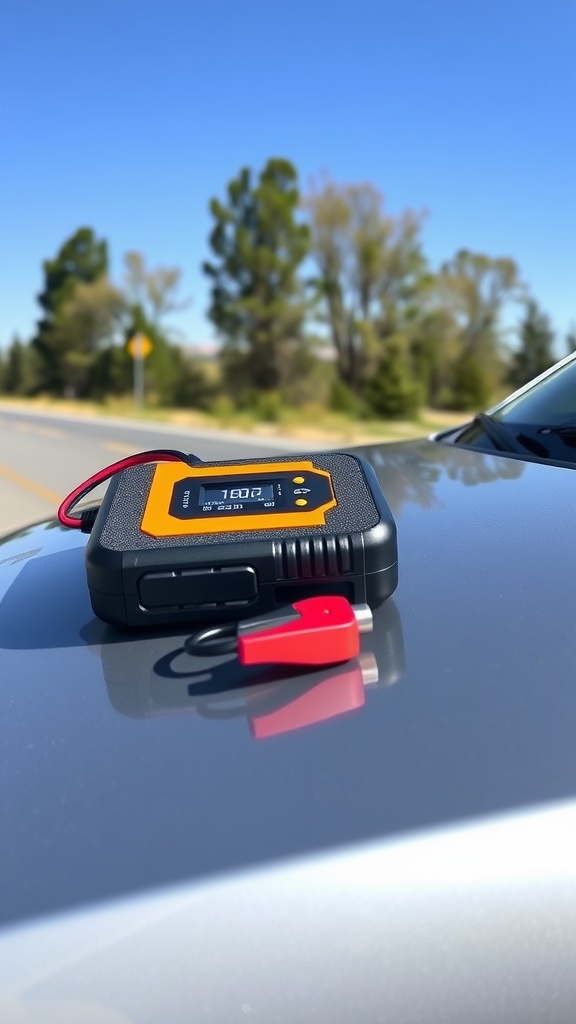
A portable jump starter is a compact device that provides a quick and easy way to restart a dead battery without needing another vehicle.
It’s especially useful for emergencies, road trips, or situations where another car isn’t available.
Benefits of Using a Portable Jump Starter:
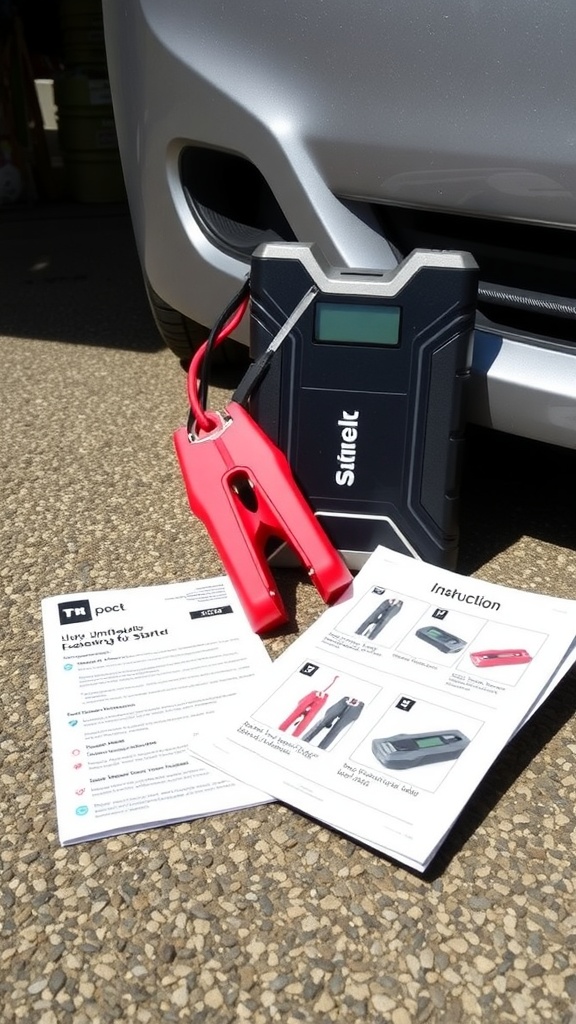
- No need for another vehicle – Perfect for solo drivers.
- Quick and easy to use – Takes only a few minutes.
- Portable and lightweight – Easy to store in your car.
- Safe and controlled power supply – Reduces the risk of sparks or electrical damage.
- Multiple functionalities – Some models have built-in flashlights, USB chargers, and air compressors.
What You Need Before Jump-Starting
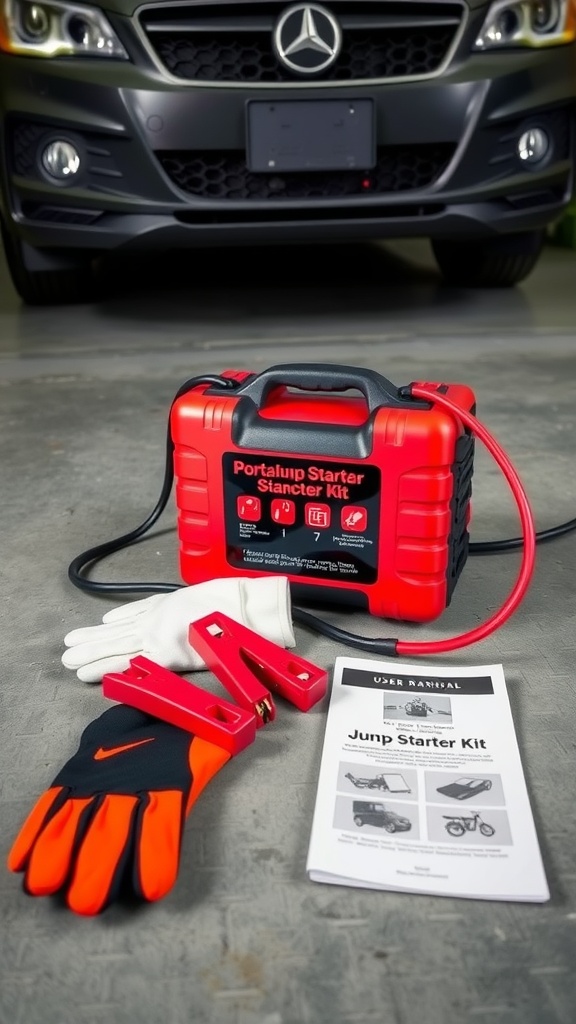
- A fully charged portable jump starter.
- Safety gloves and goggles (recommended).
- Your car’s owner’s manual (to locate battery terminals and safety instructions).
Step-by-Step Guide to Jump-Starting a Car with a Portable Jump Starter
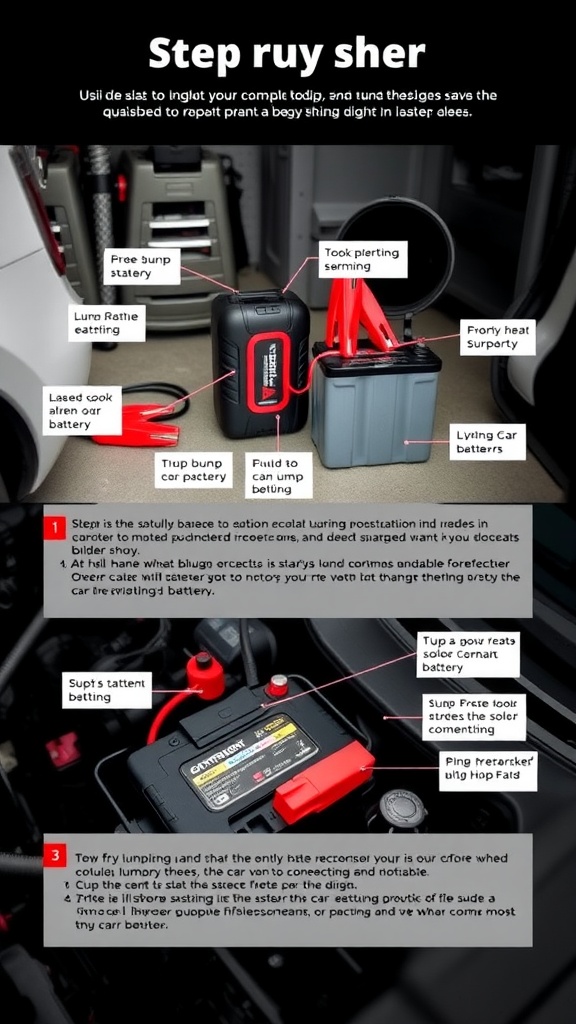
1. Turn Everything Off
- Ensure the car ignition, headlights, and all electrical accessories are turned off.
- Remove the key from the ignition for added safety.
2. Locate the Battery
- Open the car hood and find the battery.
- Identify the positive (+) and negative (-) terminals.
- If the terminals are corroded, clean them with a dry cloth.
3. Connect the Jump Starter
- Attach the red (positive) clamp to the positive (+) terminal of the car battery.
- Attach the black (negative) clamp to an unpainted metal surface on the engine block or chassis (not the battery itself).
4. Power On the Jump Starter
- Switch on the portable jump starter.
- Some models require pressing a Boost or Start button.
- Wait for the indicator light or display to confirm it’s ready.
5. Start the Car
- Turn the key in the ignition or press the start button.
- If the car doesn’t start immediately, wait 30-60 seconds and try again.
6. Disconnect the Jump Starter
- Turn off the portable jump starter.
- Remove the black clamp first, then the red clamp.
- Store the jump starter in your car.
7. Let the Car Run
- Keep the engine running for at least 15-30 minutes.
- Drive around to allow the alternator to recharge the battery.
Safety Tips for Using a Portable Jump Starter
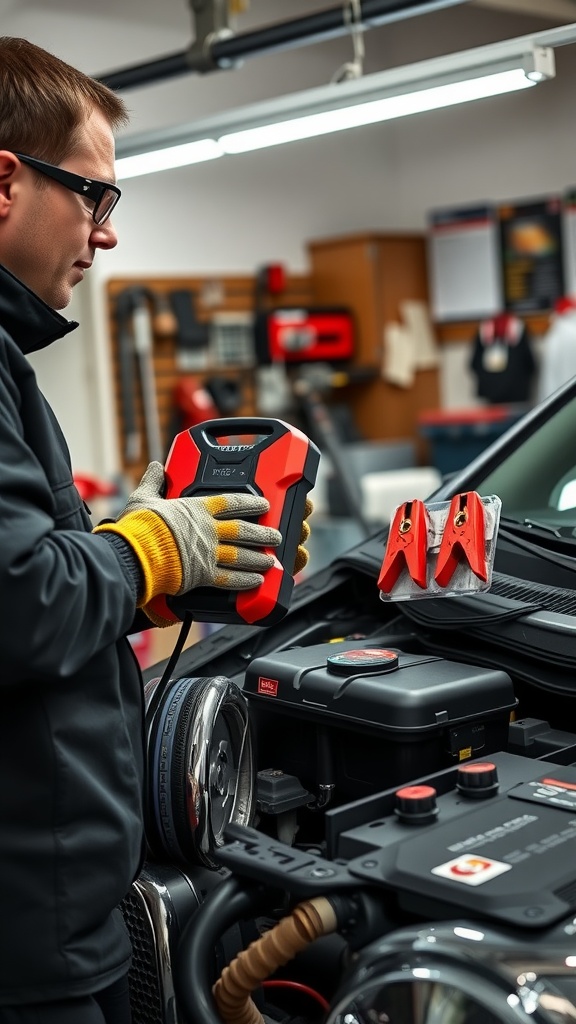
- Always read the user manual of your jump starter.
- Ensure the jump starter is fully charged before storing it in your car.
- Never touch the clamps together when the device is powered on.
- Avoid using the jump starter in extreme weather conditions.
- If the car doesn’t start after multiple attempts, your battery may need replacement.
FAQs
1. Can a portable jump starter damage my car?
No, as long as you connect the cables correctly and use a jump starter with the proper voltage for your vehicle.
2. How often should I charge my portable jump starter?
Most jump starters should be charged every 3-6 months, depending on the model.
3. Can I use a portable jump starter on any car?
Most jump starters work with gasoline and diesel engines up to a certain size. Check your device’s specifications.
4. How long does it take to jump-start a car with a portable jump starter?
It usually takes a few minutes, but always let your engine run for at least 15 minutes after a successful jump.
5. What should I do if my car still won’t start?
- Ensure the jump starter is fully charged.
- Check that the clamps are properly connected.
- If the battery is completely dead, you may need a replacement battery.
6. Can I use a portable jump starter in cold weather?
Yes, but cold temperatures can reduce the efficiency of both the jump starter and the car battery. Store the jump starter indoors during winter for best results.
7. What are the signs that my car battery needs to be replaced?
- Slow engine crank.
- Frequent need for jump-starts.
- Dim headlights.
- Clicking sound when turning the key.
- Battery age over 3-5 years.
Additional Car Battery Maintenance Tips
- Regularly clean the battery terminals to prevent corrosion.
- Avoid leaving lights and accessories on when the engine is off.
- Test your battery at least once a year.
- If your car sits unused for long periods, use a trickle charger to maintain battery health.
Using a portable jump starter is a quick, safe, and convenient way to revive a dead car battery. Keep one in your vehicle for emergencies, and always follow the correct procedure for the best results.
